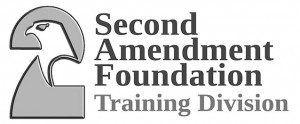by Tom Givens | Chief Firearms Instructor, SAF-TD
 “Dry firing” or “dry practice” consists of practicing firearms manipulations without the presence of any live ammunition. There are a couple of excellent reasons for engaging in this practice. For one thing, the rising cost of ammunition and the time burden of traveling to and from a live fire range often limits the amount of practice we can get. More practice equals more skill. Dry work can be accomplished in your own home and with no expenditure of ammunition, so there is zero cost.
“Dry firing” or “dry practice” consists of practicing firearms manipulations without the presence of any live ammunition. There are a couple of excellent reasons for engaging in this practice. For one thing, the rising cost of ammunition and the time burden of traveling to and from a live fire range often limits the amount of practice we can get. More practice equals more skill. Dry work can be accomplished in your own home and with no expenditure of ammunition, so there is zero cost.
Second, dry work is actually a better way to ingrain many skills. Without live fire, the shooter does not have the noise of a weapon’s discharge, the noise of other shooters’ guns firing, flying brass, reciprocating slides and the myriad other distractions on a typical firing range. Quiet, mentally focused dry work is an excellent way to learn the feel of your trigger, for instance, or to perfect your presentation from the holster.
Since you will be handling a real gun in your home there are certain precautions you will need to observe. Here is a checklist for you. Make a ritual out of going down this checklist every time, and before long these will be habits.
- Dry practice should only be conducted in one designated, established area, and nowhere else in your home. That area should have a “safe wall”, that is a wall that will actually stop bullets in the event of an unintended discharge. A brick exterior wall or a stone fireplace can work, or you can use a body-armor vest as a back-stop. Do not dry fire toward an interior drywall.
- When you enter the dry fire area, clear the gun and remove ALL live ammunition from the area. This includes loaded magazines or speedloaders, rounds in your pocket, or rounds in the desk drawer. Take all live ammunition to another room, then come back and clear your gun again.
- You will need a target, which is simply an object to aim at while you dry fire. You can use an actual commercial target, a hand drawn reduced scale target, or something similar. Don’t use an expensive or important item or the house pet! Remember to place the target on the safe wall or body armor backstop.
- A session of mentally focused practice should probably not last more than 10 to 15 minutes. If you try to stretch the session out, you will tend to get bored and sloppy. Sloppy practice is worse than no practice. Remember our goal is to rack up a huge number of correct repetitions over time, to build reflexive skills. “Muscle memory”, kinesthetic programming, conditioned reflexive responses, and habit all actually mean the same thing. All are born of consistent repetition.
- If you get interrupted during the session by a phone call or other distraction, start all over again, back at step 1. Failure to do this is an invitation to disaster, unintentionally using a loaded gun for dry work.
- There are two points in this process where there is actually a danger of an unintended discharge. Those two points are the very beginning and the very end of the session. Failure to clear the gun, move all ammo out of the room, and then clear the gun again can result in an unwanted discharge. The most common error seems to be finishing the session, loading the gun, and then saying, “Just one more rep.” When the session is over, say out loud to yourself, “This session is over. No more practice.” Leave the dry fire area for a while. Later, go back, load the gun and say out loud to yourself, “This gun is now loaded.”
At that point, it can be safely put back in the holster, or wherever you keep it.
This is the latest in TGM’s series of educational columns from the Second Amendment Foundation Training Division (SAF-TD). For information about the schedule and location of defensive firearms training classes, or classes for instructors, offered nationwide, visit online at: SAFTD.org.



